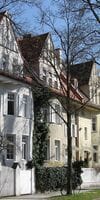Neuhausen-Nymphenburg is an urban district number 9 in Munich, located in the northwestern part of the city.
The present-day district of Neuhausen-Nymphenburg was formed in 1992 by the merger of two separate districts: Neuhausen and Nymphenburg.
Currently, Neuhausen-Nymphenburg is a well-developed residential area, on the western edge of which there is one of the most significant and visited attractions in Munich - the Nymphenburg Palace.
The Nymphenburg Palace (Schloss Nymphenburg) is a palace complex and is one of the most majestic royal palaces in Europe.
The palace was built starting in 1664 by the decree of Elector Ferdinand Maria for his wife Henrietta Adelaide of Savoy, who had just given birth to the long - awaited heir to the throne-Prince-Elector Max Emmanuel (later King Maximilian II).
Nymphenburg served for many years as the main summer residence of the Wittelsbach rulers of Bavaria.
Some of the halls and rooms of the palace still display their original Baroque decorations. Anyone can visit the palace halls today.

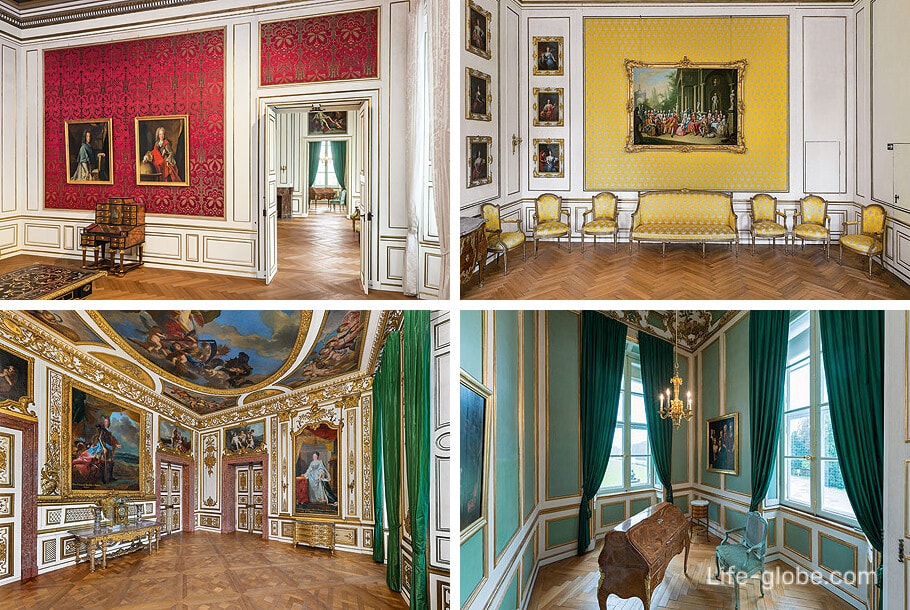
The palace complex also includes two museums:
- The Carriage Museum (Marstallmuseum) is one of the most important museums of its kind in the world and is located in the former southern Royal Stables.
The exhibition presents representative carriages, sleds, carts and riding accessories;
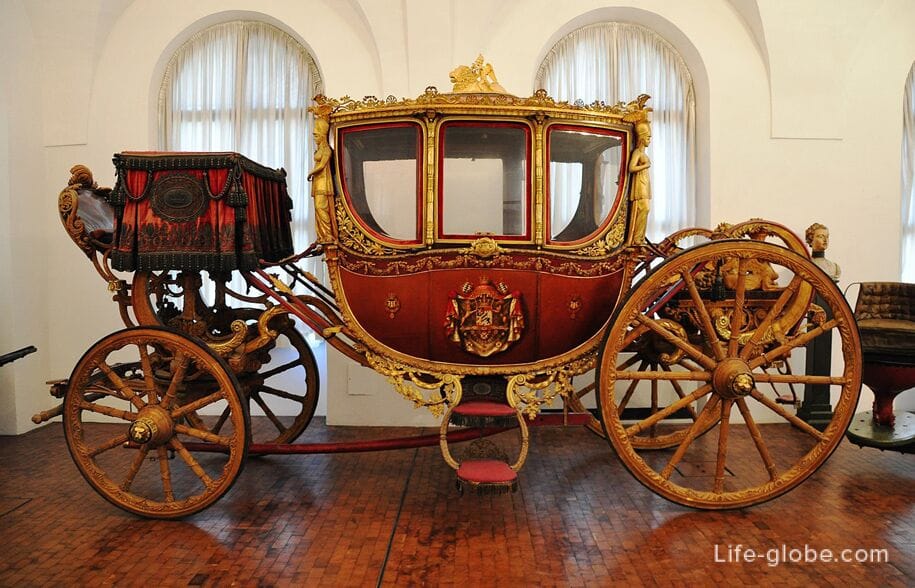
- Porcelain Museum (Porzellanmuseum), which presents a unique private collection of porcelain from the period from the 18th to the 20th century and is located in the southern wing of the Nymphenburg Palace.
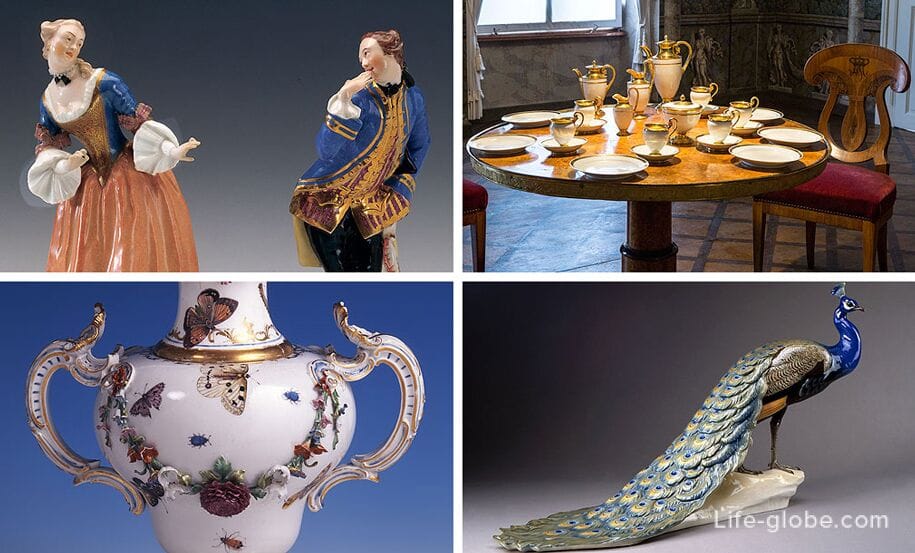
Adjacent to the palace is the Nymphenburg Palace Park, which covers almost 300 hectares and contains: a central canal with a "Grand Cascade" - a Baroque waterfall; fountains; alleys and walking paths; statues and sculptures; two lakes and a monopter.
For a fee, you can visit several pavilions - palaces in miniature in the park.
Address of the Nymphenburg Palace: Schloß Nymphenburg, 1. Nymphenburg Palace website: schloss-nymphenburg. Read more about the Nymphenburg Palace and the surrounding park…
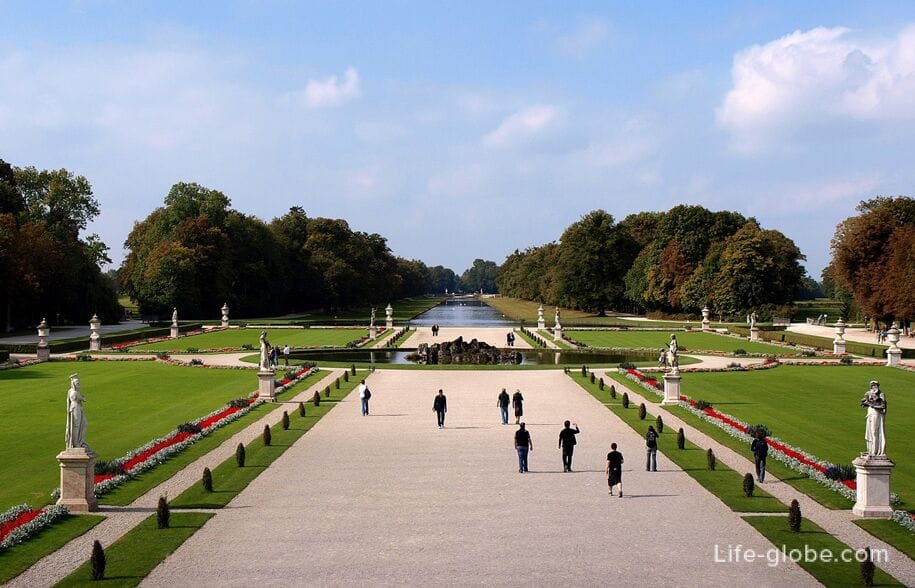
The Nymphenburg Palace is approached from the Waisenhausstrasse (Waisenhausstraße) by two shady roads separated by the castle canal.
The canal is crossed by a small arched bridge "Gerner" (Gerner Brücke). The channel is home to swans and ducks. During the summer months, guests can take a gondola ride along the canal, and on cold winter days, when the canal freezes and is covered with ice, it becomes a popular destination for ice skating, hockey or curling.
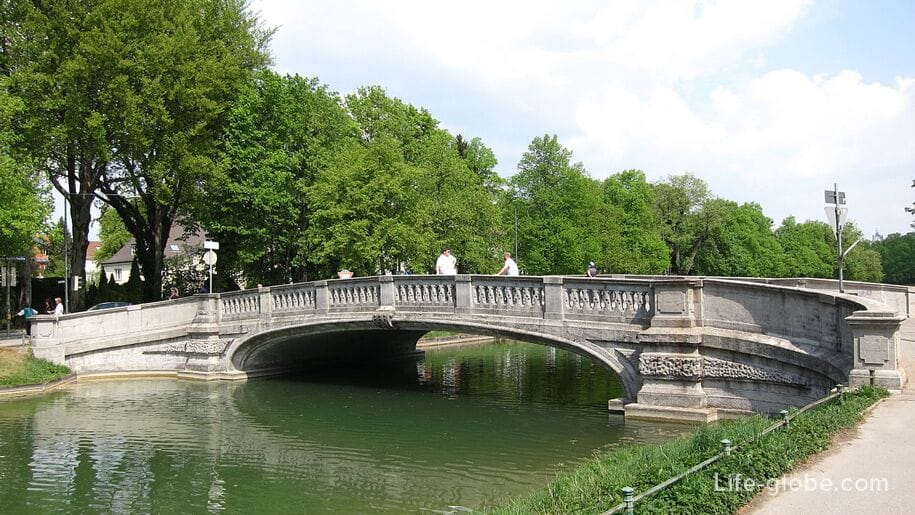
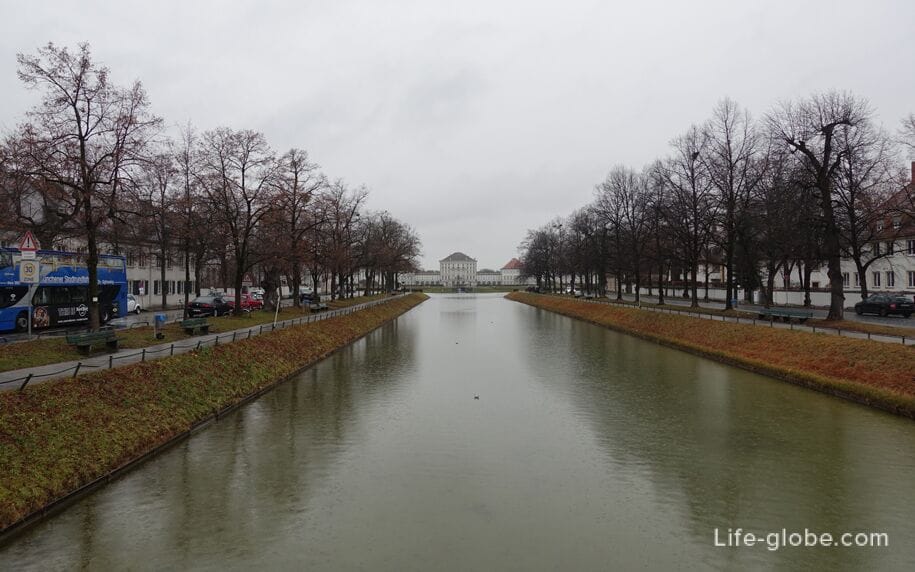
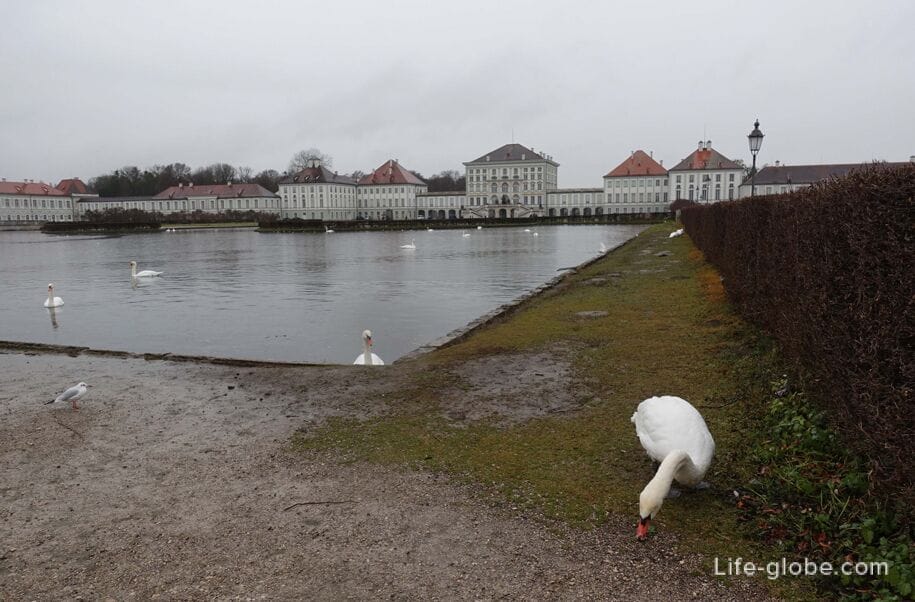
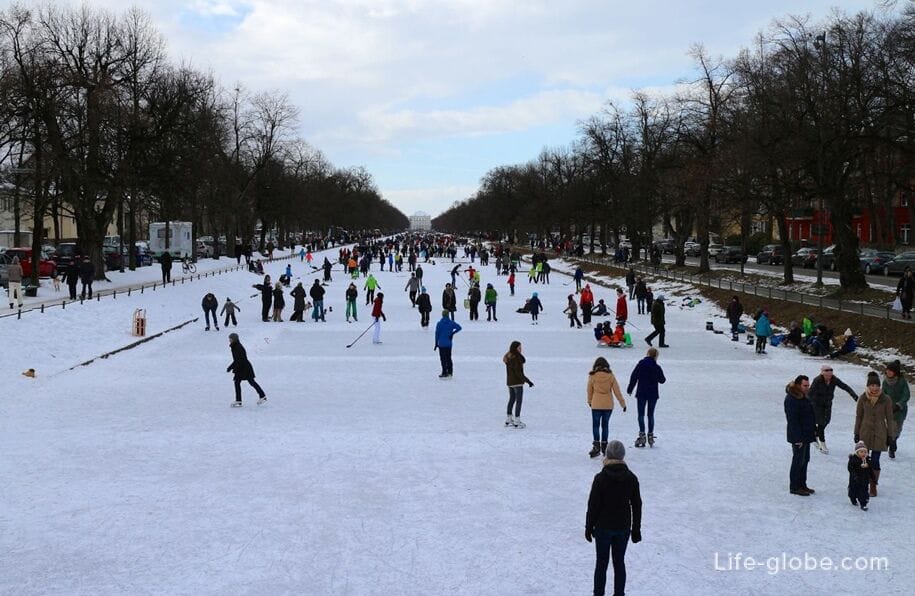
Museum "Man and Nature"
The Museum "Man and Nature" (Museum Mensch und Natur) is an interactive museum of natural history, which tells about the formation of the Solar System, the history of the Earth and the development of life, human anatomy and biology, problems of nutrition and the environment, as well as the relationship of man to nature, etc.
!!! Until May 2020, the museum was located in the north wing of the Nymphenburg Palace , after which the construction of a separate museum building began. The museum is due to open in 2025 under a new name-BIOTOPIA-Museum of Natural History of Bavaria (BIOTOPIA-Naturkundemuseum Bayern).
Museum website: mmn-muenchen.
Erwin von Kreibig Museum
The Erwin von Kreibig Museum displays the works of the artist Kreibig in permanent exhibitions, as well as in temporary exhibitions with works by other regional artists.
The artist left behind an extensive creative legacy of drawings and paintings, in which he often depicted strong women.
The museum is located in front of the Nymphenburg Castle, on its southern side, at the address: Südliches Schloßrondell, 1.
Museum website: kreibig.foundation.

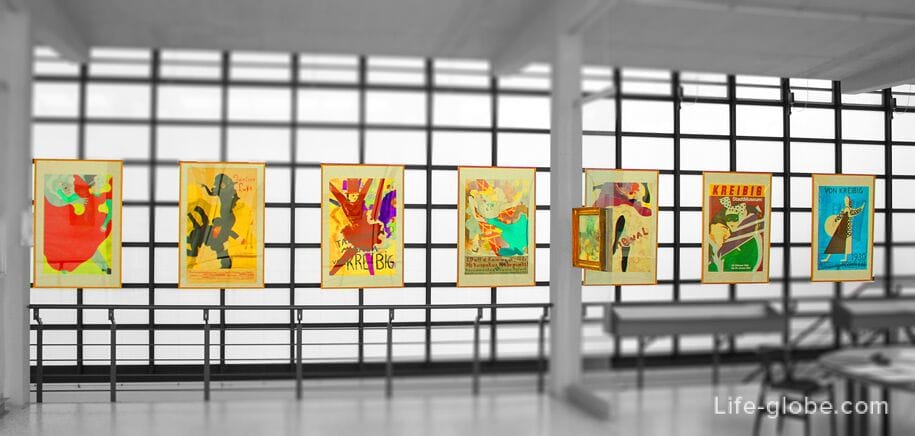
Botanical Garden Munich-Nymphenburg
The Botanical Garden Munich-Nymphenburg (Botanischer Garten München-Nymphenburg) is a botanical garden and arboretum that was established in 1914.
Today, more than 19,000 species and subspecies of plants are grown in the garden, and it also serves to preserve rare plants and European bee species.
The garden is located northeast of the Nymphenburg Palace, but is not part of the palace complex. The Botsad is partially separated from the Nymphenburg Park by a wall and a street.
Garden address: Menzinger Str. 65. Botsad website: botmuc.
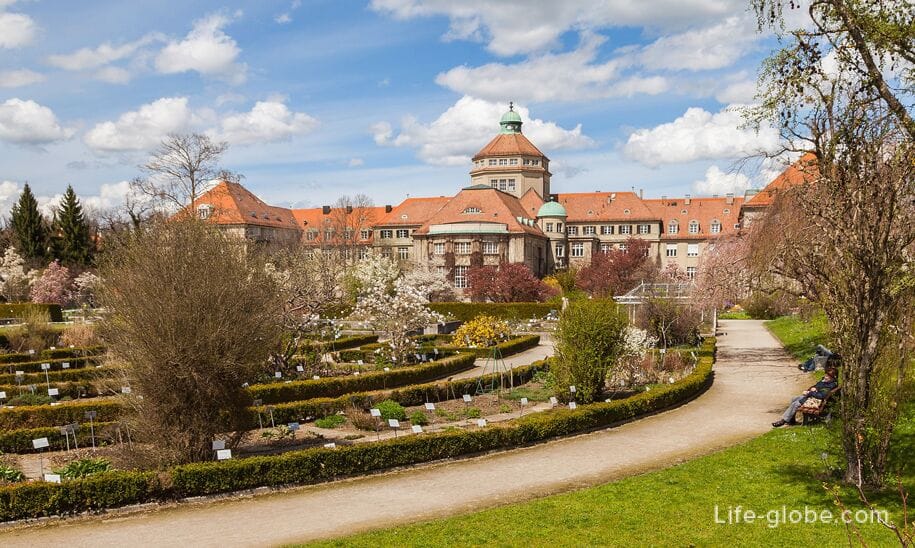
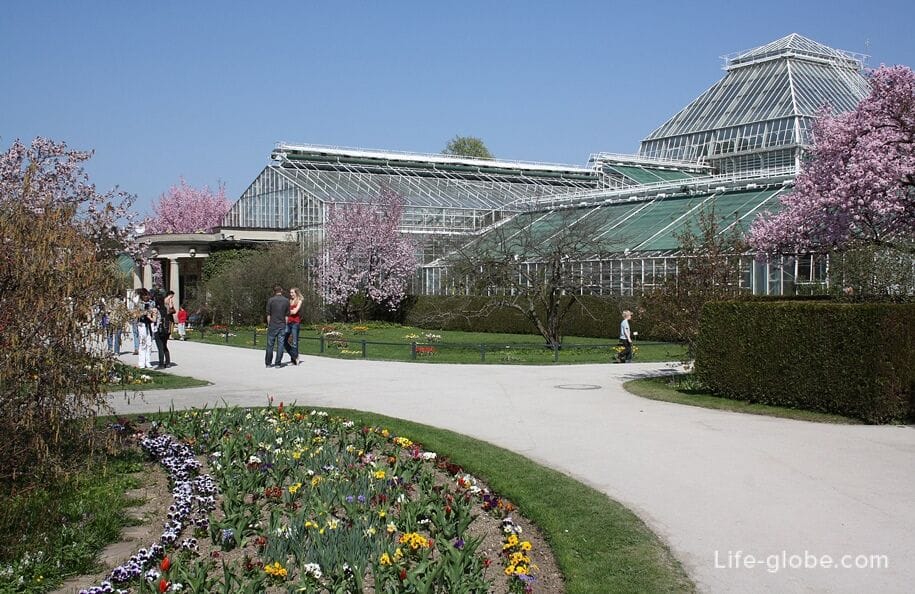
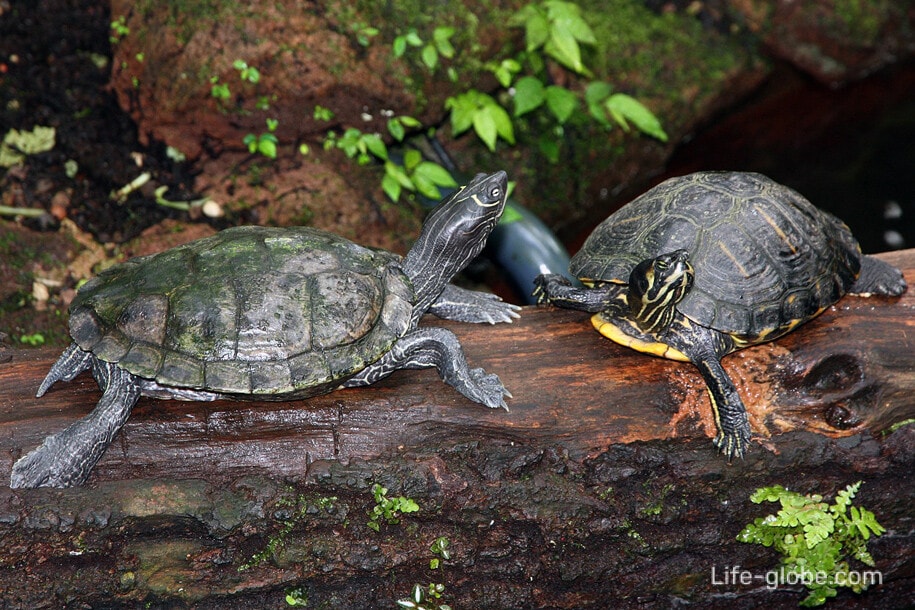
Historic villas
Lovers of beautiful houses and architecture can see the villas and Art Nouveau buildings in the Neuhausen-Nymphenburg district.
They deserve special attention:
- the former district of Gern , located northeast of the Nymphenburg Canal, between the streets of Waisenhausstrasse (Waisenhausstraße), Klugstarsse (Klugstraße) and Gerner starsse (Gerner Straße).
The first middle-class Art Nouveau mansion in the area was built in 1892;
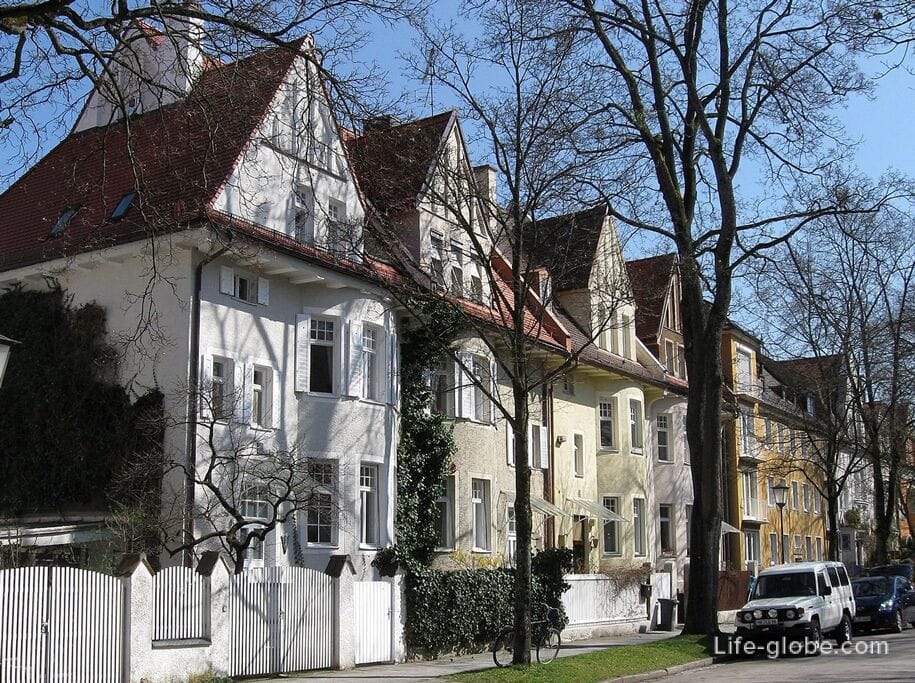

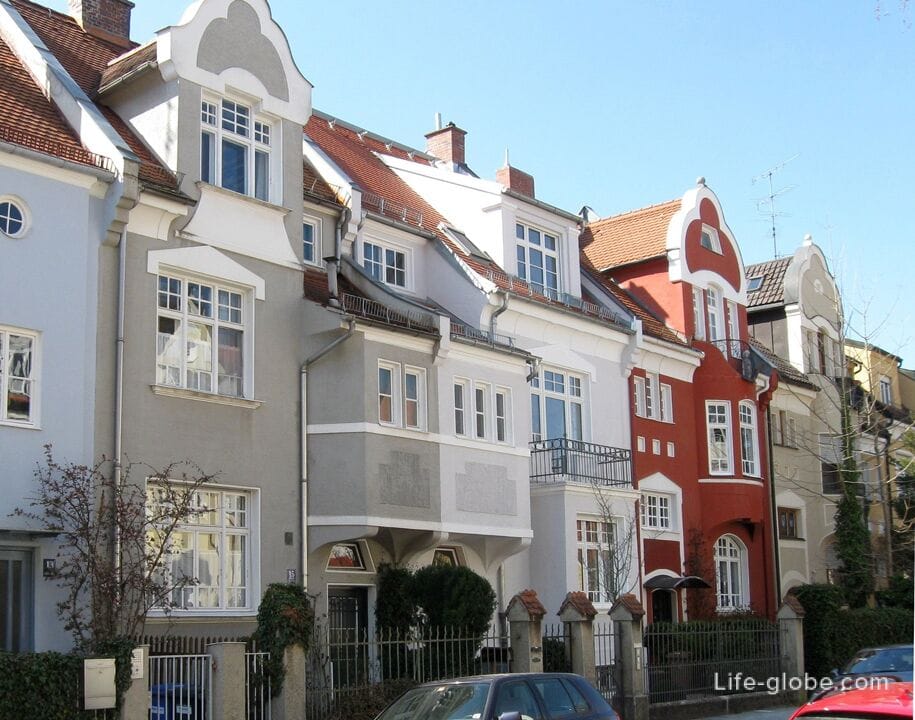
- The so-called "villa colony Neuwittelsbach" (Villenkolonie Neuwittelsbach), which is located south of the Nymphenburg Canal and is considered an outstanding, uniformly designed quarter of villas of the late 19th and early 20th centuries with a park character.
The block was built starting in 1880. The Romanstrasse street deserves special attention in the quarter.
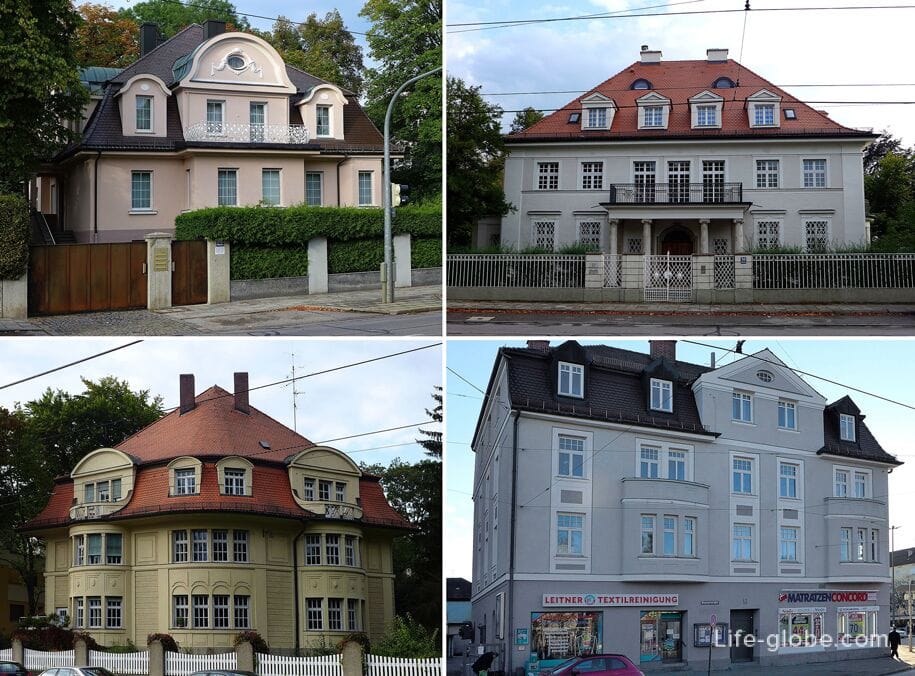
Hirschgarten Park
Hirschgarten Park, which means "Deer Garden", is located near the Nymphenburg Palace and is a popular place in Munich.
The name "Deer" park was given because it was previously located outside the city and nobles hunted in this area. In 1780, Elector Karl Theodor ordered the creation of hunting grounds: part of the territory was fenced, and 100 pairs of red deer were released.
In 1958-1959, the north-eastern part of the park was transformed into an urban recreation area. From 1968 to 1970, the area was expanded to become a public park.
Today, the park contains: trees, some of which are more than 150 years old; playgrounds for children; a skate park; meadows; barbecue areas and a 2-hectare aviary with fallow deer and moufflon.
Also in the park is located, presumably, the largest beer garden in the world, designed for 8000 seats. However, it is not entirely clear whether the beer garden in the park is really the largest in the world?! But one thing is for sure: "at least in Bavaria, there is no beer garden that boasts a large number of places." Website of a restaurant with a beer garden: hirschgarten.
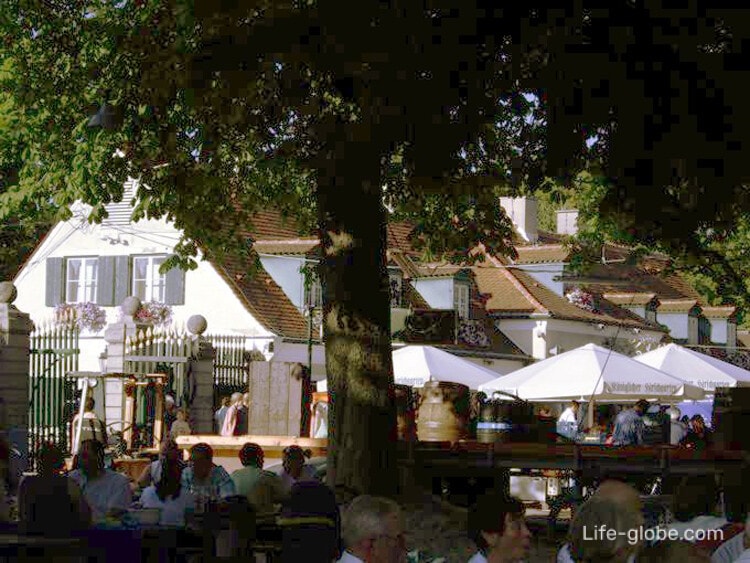
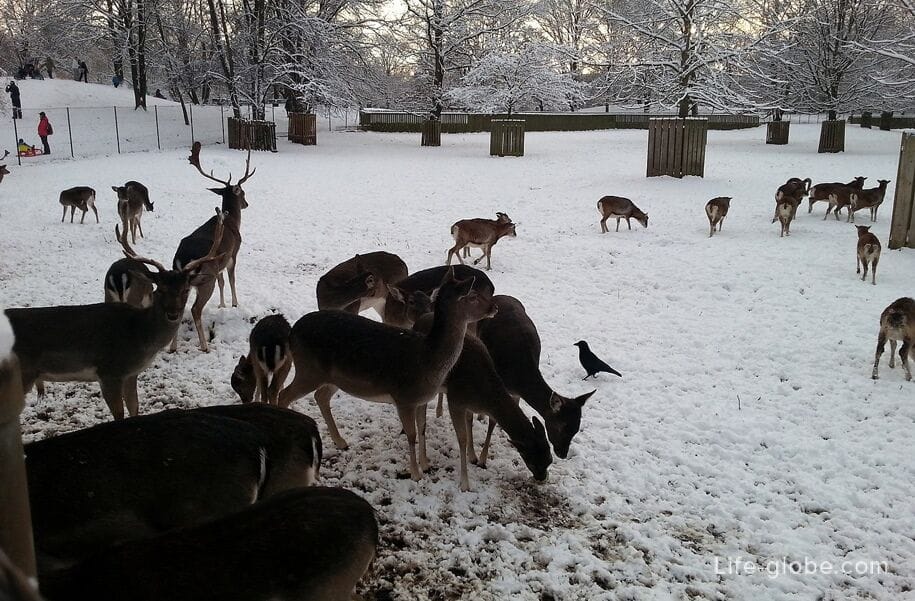
Taxis Park
Taxispark - a small oasis for recreation and entertainment, created on the site of a former closed recreation park for people who have suffered military injuries.
The park has created: a children's playground, recreation areas, a fountain and a lower garden that extends over several levels.
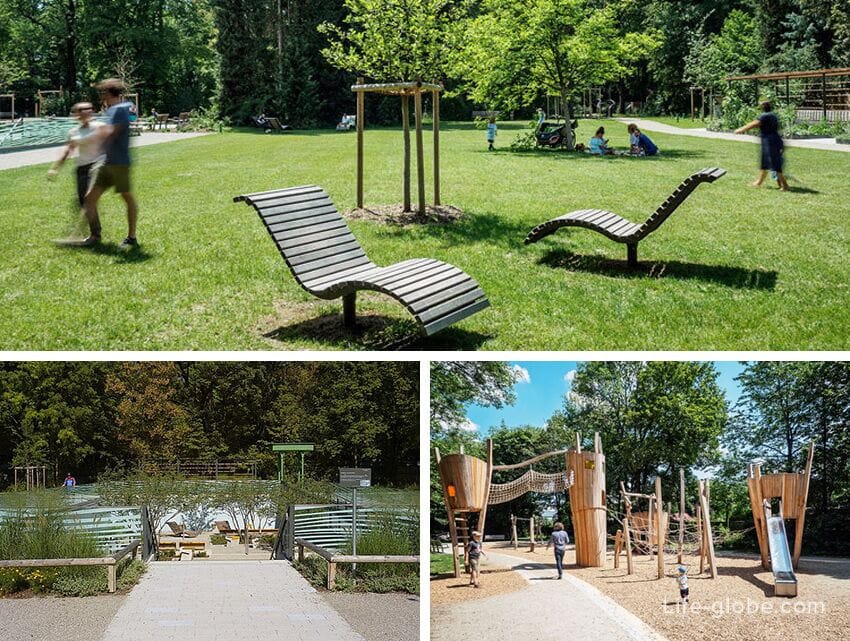
Olympic Park
On the north-eastern edge of the district of Neuhausen-Nymphenburg is the Olympic Park, a small part of which is part of the district.
The Olympic Park (Olympiapark) is a park complex built for the 1972 Summer Olympics in Munich.
Today, the Olympic Park serves as a venue for sports, cultural, social and religious events and festivals, as well as a place for sports, walking and recreation.
In addition to the sports facilities themselves, the Olympic Park complex includes: landscape park with Olympic Observation Mountain, Lake Olympia, Munich Olympic Avenue of Stars, beer garden, restaurants, Olympic Observation Tower, aquarium, residential area and shopping center. Read more about the Olympic Park...
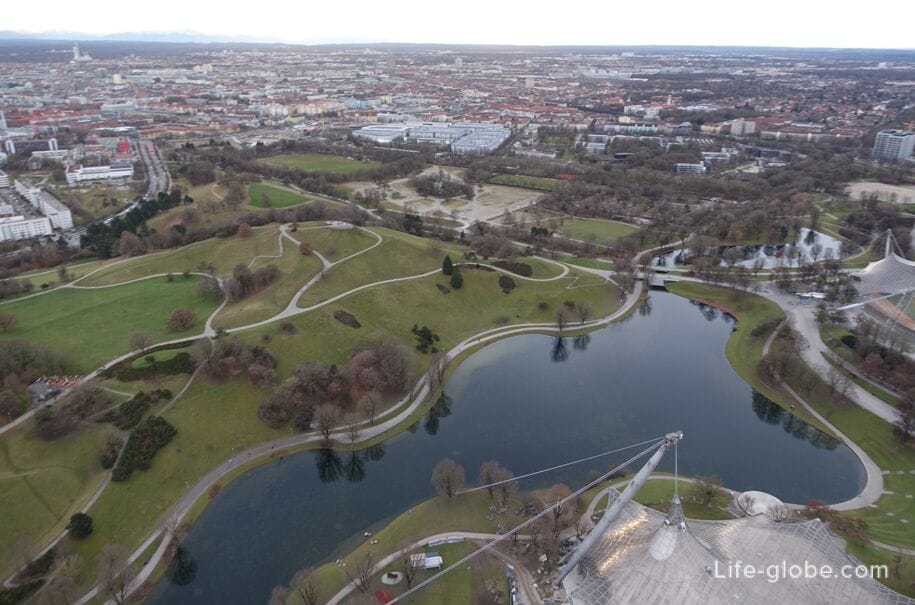
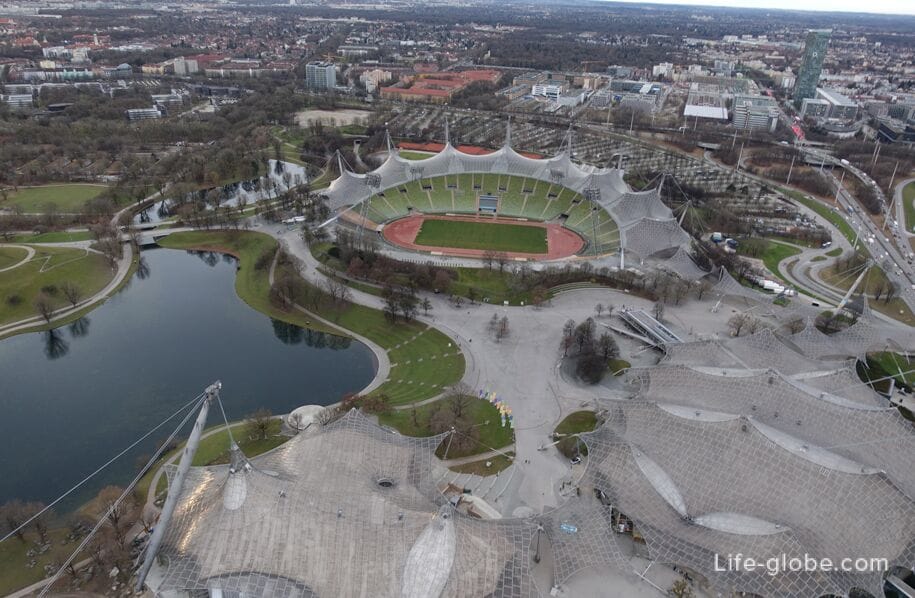

Rotkreuz Square
Rotkreuz square (Rotkreuzplatz) - a small square, in the center of which is the fountain "Stone couple" (Steinernes Paar / Steinernes Paar).
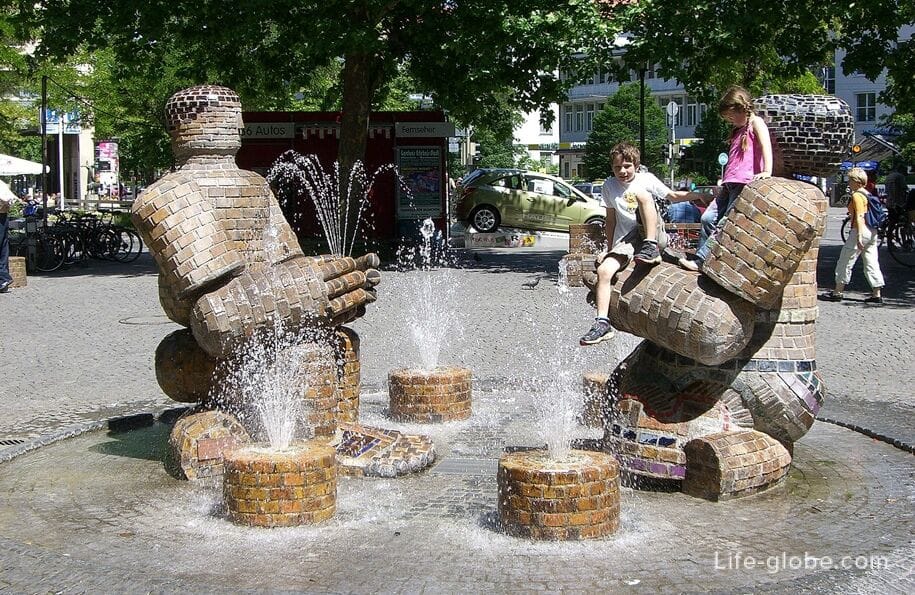
Every Thursday, the square hosts a weekly farmers ' market. The Solidarity Festival is held once a year (in summer). The Water Bird Festival has been held in the square every two years since 2009.
On the eve of Christmas, there is a small but cozy Christmas market in the square.
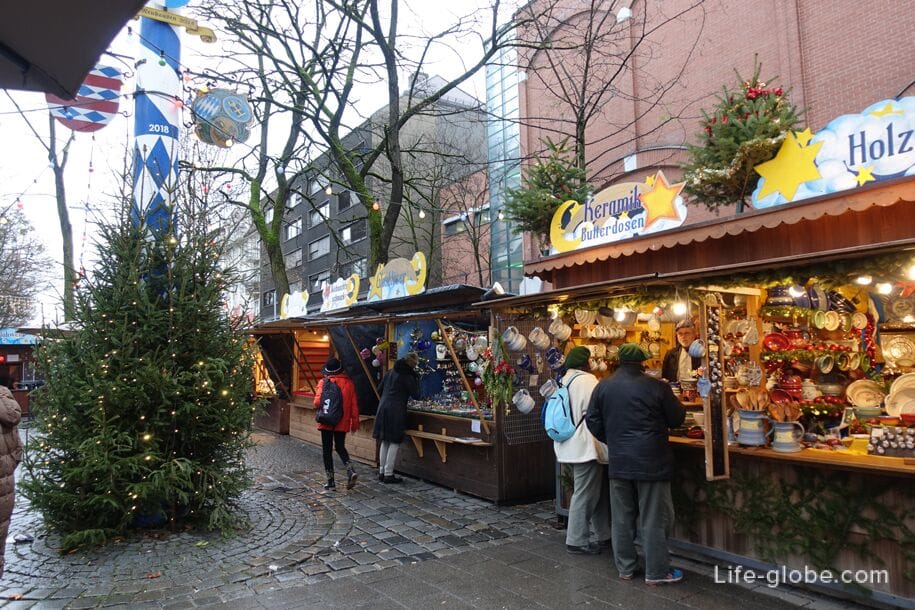
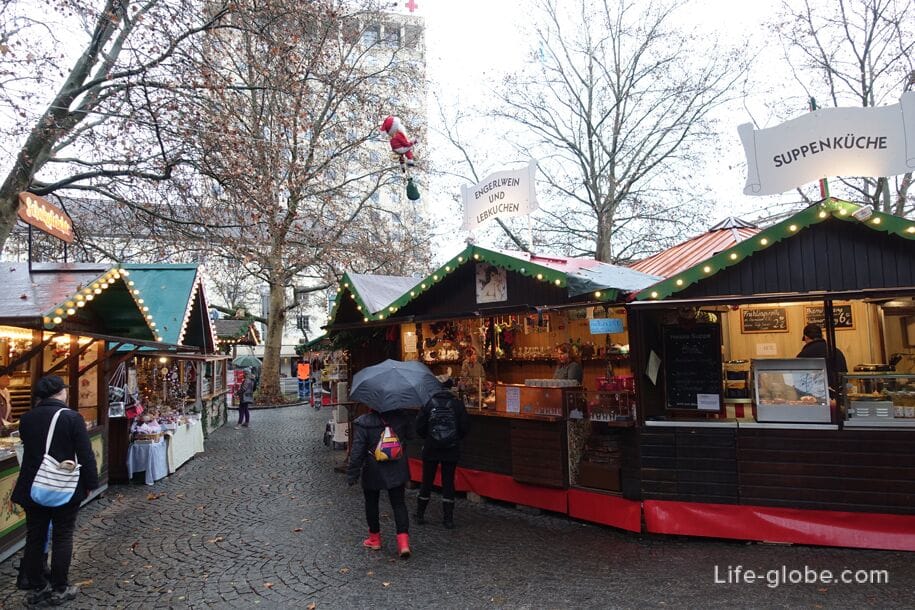

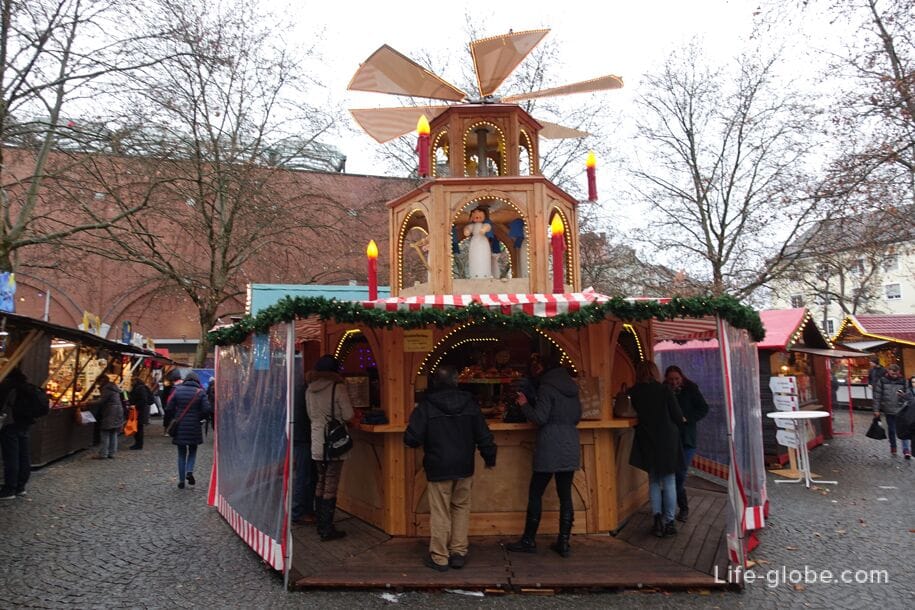
Near the square are: department store "Galeria Kaufhof München Rotkreuzplatz"; high-rise building designed by Bruno Bieler in 1949 and later built by Hubert Michel (completed in 1965); restaurant "Zum Jagdschlössl" - one of the buildings of the post-war period, which still exists today; public transport stops-bus, tram and metro lines.
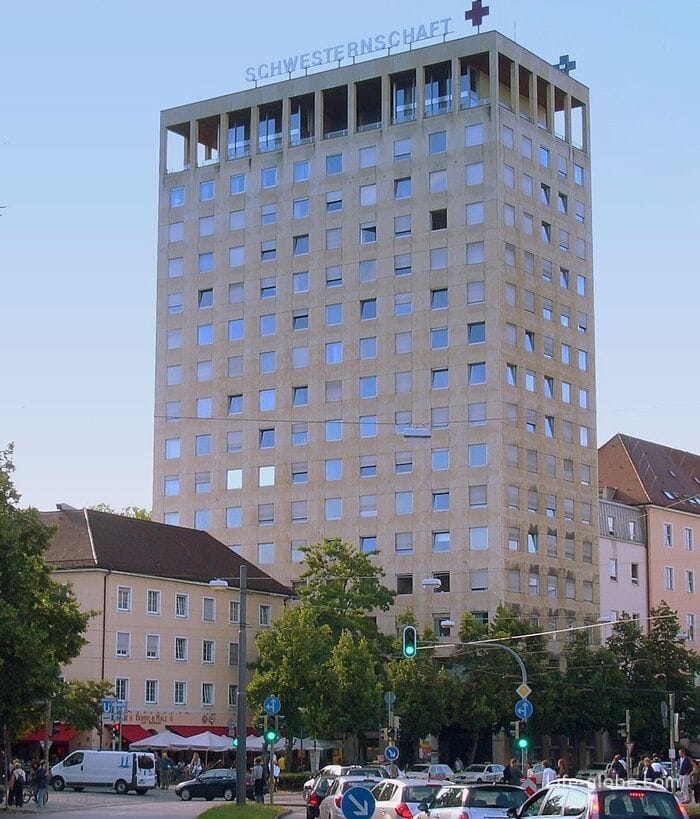
Pedro Square
Pedro square (Dom-Pedro-Platz) was created in 1899 as the new center of Neuhausen, and is defined by the neo-Baroque style.
In the center of the square is the fountain "Hercules" (Heraklesbrunnen).

Around the square are notable:
- the building in the Baroque style, which today houses the primary school, is located under the square at number 2. Construction - 1899-1900, the work of Hans Grasel;
- the church erected by Heilmann and Littmann (church, German Renaissance, 1899-1900), number 3;
- Christ Church, neo-Gothic with a pointed tower, built in 1899-1901 by Heilmann and Littmann (according to the plans of the architect Erich Goebel). The church was simplified after serious damage caused in the Second World War. Under number 4;
- Christuskirche Community Center, number 5. The architecture of the building is notable for the neoclassical design of the hipped roof. Construction - 1925-1926, the work of Eugen Hoenig and Karl Seldner;
- The Hospital of the Holy Spirit (Heiliggeistspital) - a municipal nursing home, now Munich Abbey-a vast neo-Baroque monastic complex with an integrated Catholic Church (1904-1907, Hans Grasel). Number 6.
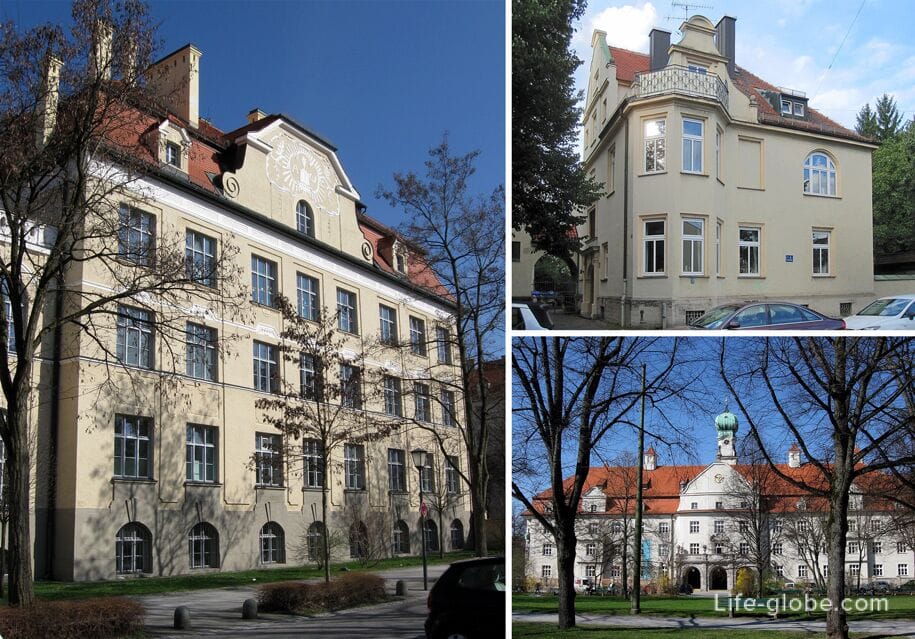
Third Order Clinic Building (Dritter Order Hospital)
As in other major German cities, at the end of the 19th century, Munich had a great need for hospitals for people who needed care, especially if they belonged to the lower classes. Patients from the lower strata of the population were discharged from existing hospitals as incurable or not accepted at all, and they could not afford long-term nursing services.
Father of the Church of the Third Holy Order in Munich - Petrus Eder (Capuchin) I wanted to participate in changes leading to better health care for low-income citizens. He often put pressure on various agencies to implement his plans to provide medical care to the religious community. He was inspired, encouraged, and actively supported by some influential princes of the time.
Since October 6, 1901, in the religious community of St. Nicholas. Anton's "Third Aid Service" started its work. Father Petrus was able to attract some private nurses to his business.
The construction of a separate building of the teaching hospital was started in 1912. Subsequently, the hospital was expanded several times.
So the Third-order Clinic (Klinikum Dritter Orden) was created, which turned into a recognized center of medical competence and care for people. The medical facility is still functioning today, and the building itself is an architectural monument.
Hospital address: Menzinger Strasse, 44 (Menzinger Strraße).


Round-bottom outdoor pool
The Dantebad swimming pool is a public swimming pool complex that is open to the public, both in summer and winter.
In summer, the complex offers several swimming pools, including a 50-meter swimming pool suitable for competitions, a 30-meter swimming pool with a wide water slide, a pool with attractions and a nudist area with its own 25-meter pool.
In winter, the Dantebad is a warm outdoor 50-meter pool that heats up to about 30°C (in summer, the water temperature in the pool is somewhere around 27 °C).
The complex also includes: sauna, children's playground, green area with sun loungers, table tennis.
Pool address: Postillionstrasse, 17 (Postillonstraße). Pool site: dante-freibad.

The Neuhausen-Nymphenburg district also includes: churches and stadium «Dantestadion-Nebenplatz».
Munich's train and bus stations are located near the south-eastern edge of the district.
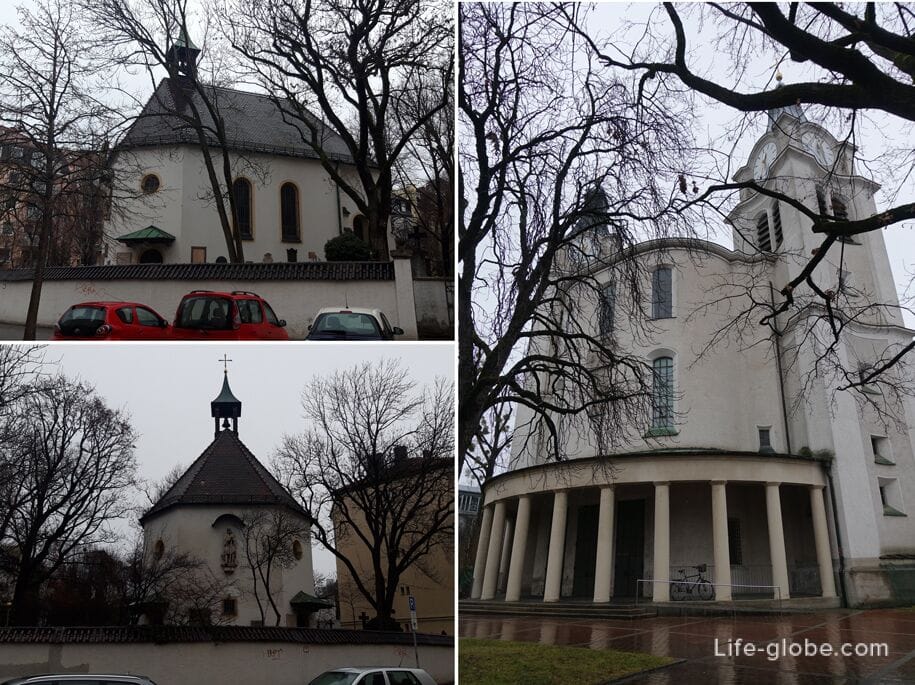
Location of the Neuhausen-Nymphenburg district
The district of Neuhausen-Nymphenburg borders: the districts of Moosach to the north, Milbertshofen - Am Hart to the northeast, Schwabing-West, and Maxvorstadt in the east, Schwanthalerhöhe or West End in the southeast, Laim in the south, and Pasing - Obermenzing in the west.
Neuhausen-Nymphenburg district on the map

Where to stay in Neuhausen-Nymphenburg
The 4-star Novotel München City Arnulfpark offers a fitness center, sauna, restaurant, bar, free Wi-Fi and facilities for disabled guests.
All rooms have a coffee / tea maker.
Breakfast can be included in the room rate. Link to the hotel
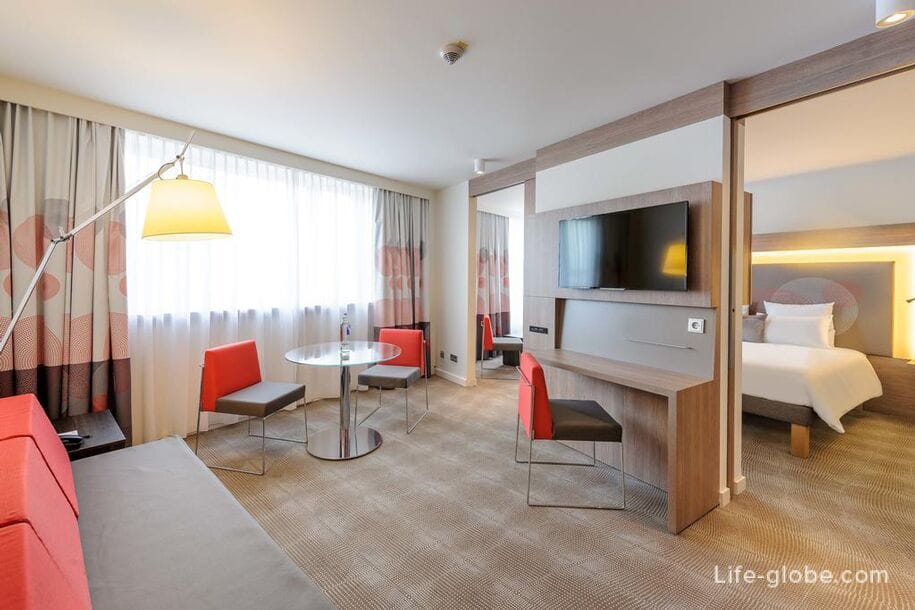
3-star Rotkreuzplatz Hotel offers a 24-hour front desk, parking, an elevator and free Wi-Fi.
In the rooms: a flat-screen TV with satellite channels, wooden furniture and a private bathroom with a hairdryer are provided.
A buffet breakfast is included in the room rate. Link to the hotel
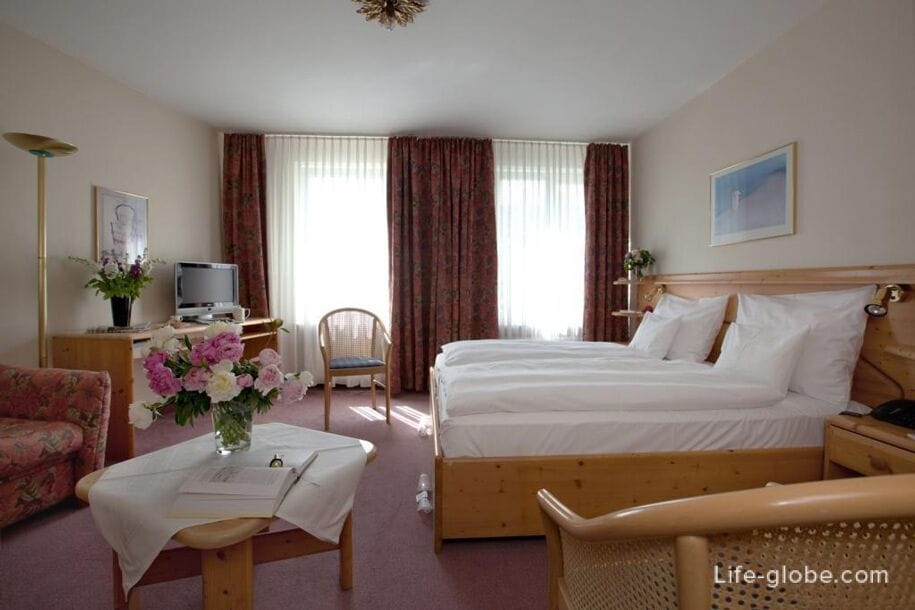
The 3-star Kriemhild am Hirschgarten Hotel with free parking and room service.
In the rooms: modern amenities, including free internet access. A buffet breakfast is served each morning. Link to the hotel
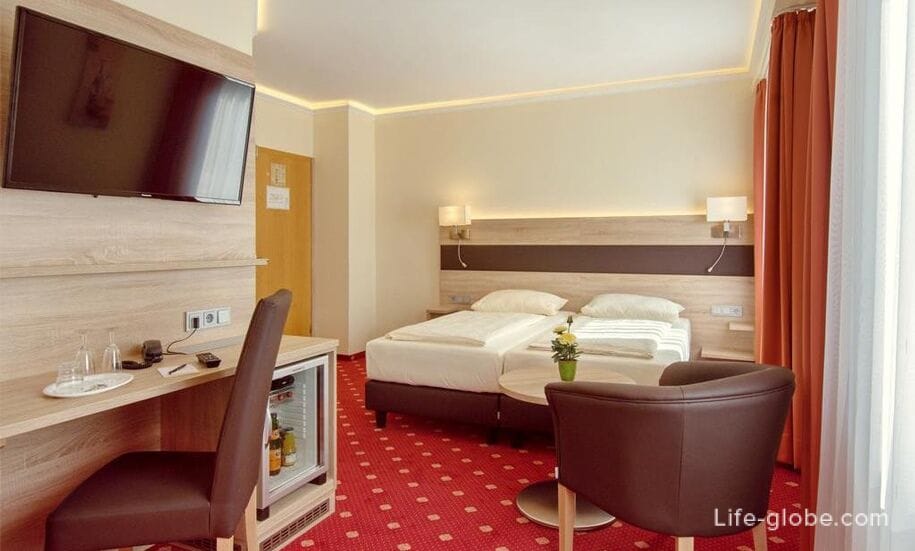
The 3-star Mercure München am Olympiapark Hotel with a bar, terrace, underground parking and free Wi-Fi.
In the rooms: air conditioning, a flat-screen TV, coffee/tea making facilities and a private bathroom.
Breakfast can be included in the room rate. Link to the hotel

Family-run Hotel Laimer Hof am Schloss Nymphenburg with a bar, restaurant, free Wi-Fi, bicycle rental and parking.
The hotel was built in 1886 and is a Neo-Renaissance villa with individually decorated rooms in a classic style. Rooms here will provide you with a satellite TV, a desk and a private bathroom. Link to the hotel
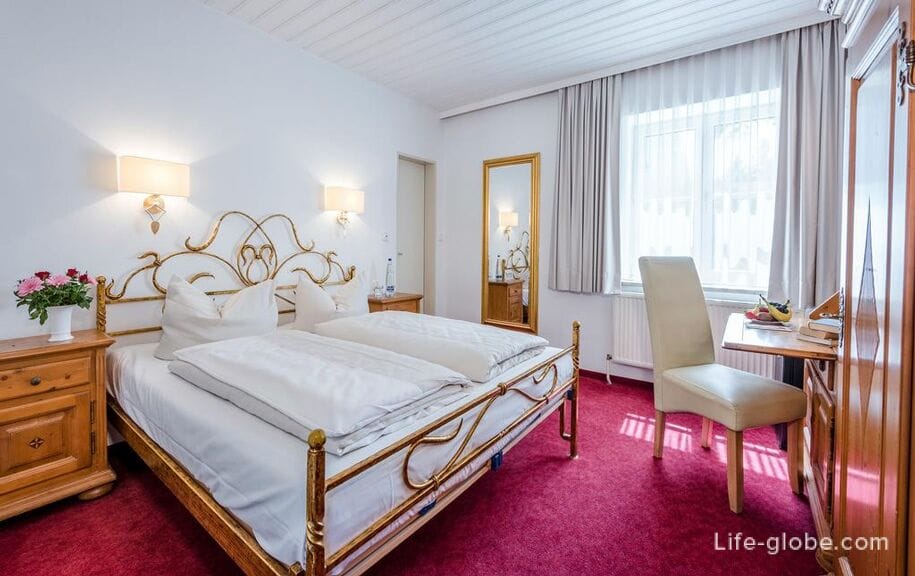
Leonardo Hotel Munich City Olympiapark It offers a restaurant, a bar, free Wi-Fi and on-site parking.
The spacious rooms at the hotel are equipped with blackout curtains, satellite TV and a desk.
Breakfast can be included in the room rate. Link to the hotel
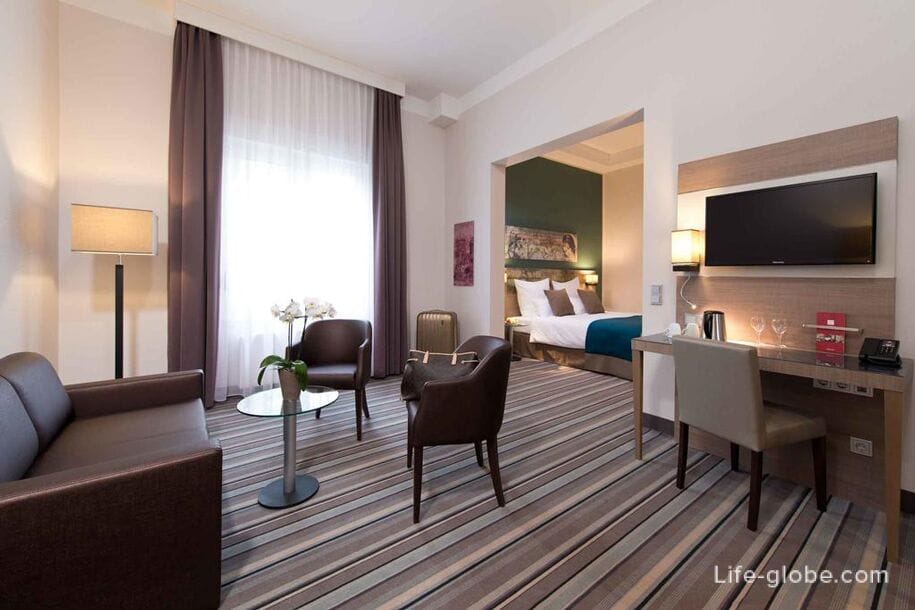
All accommodation options in Munich, including the Neuhausen-Nymphenburg area and the city center, can be viewed and booked here




